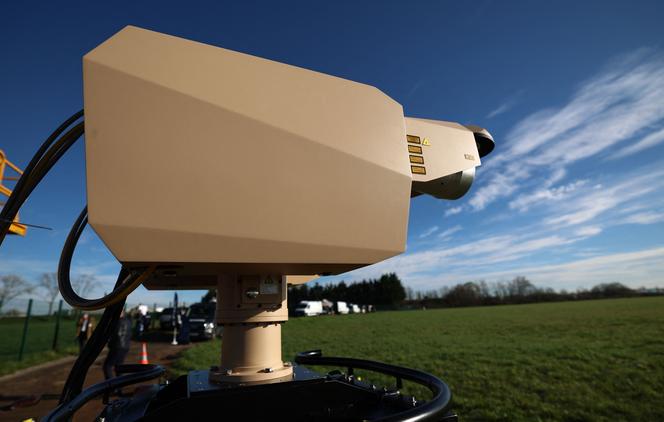


The obvious impact on the side of the small quadcopter was the size of a €2 coin. It was caused by a two-kilowatt (kW) laser beam that brought down the device like a stone during an exercise organized by the French Air Force at Villacoublay air base (Yvelines). To disable this 20-centimeter-long flying object, weighing 600 grams and selling for €400, the Cilas Helma-P laser weapon was required. This piece of equipment, with a turret weighing 80 kilograms, is worth around €2 million. This serves as a prime example of the asymmetry in the fight against drones.
The flying camera capable of capturing stunning aerial images for recreational purposes has become the armed wing of a somewhat elusive "low-cost threat." Images of the war in Ukraine and the battlefields in Nagorno-Karabakh and the Middle East feature small drones – the same as those used by holidaymakers – dropping explosives on the enemy, further underscoring the credibility of this new danger.
Nowadays, no major public event or international summit takes place without the deployment of equipment designed to counter potential drone intrusions. Thwarting such attacks – whether terrorist acts or media stunts by activists seeking to disrupt ceremonies – has become the obsession of the organizers of the Paris Olympic and Paralympic Games. In this regard, France stands out as one of the nations that raised the alarm and orchestrated industrialists' responses earliest.
This rapid awareness stems from the alarm caused in late 2014 by the overflight of seven nuclear power plants by unmanned aircraft. These incidents, never resolved, along with subsequent alerts, particularly concerning airports, led the authorities to establish a policy for mitigating this multifaceted risk.
Detecting and neutralizing an aircraft barely larger than a toy that can fly several kilometers away from its pilot – or even move according to a pre-programmed flight plan – represents a challenge. Following an initial call for tenders launched in 2014 by the General Secretariat for Defence and National Security (SGDSN, under the prime minister's authority), the proximity of the Olympic Games prompted the expansion and enhancement of anti-drone operations.

In 2022, a new European call for tenders issued by the Directorate General of Armament, dubbed "Parade" (for Protection Déployable Modulaire Antidrone, "modular deployable anti-drone protection"), was won by the consortium formed by Thales, a heavyweight in defense electronics, and CS Group Sopra Steria, a specialist in airborne protection. Worth a total of €350 million over 11 years, of which €33 million is firm to date, this contract has given greater visibility to a market that has become critical for defense electronics manufacturers.
You have 61.51% of this article left to read. The rest is for subscribers only.
